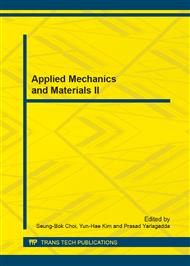p.1124
p.1128
p.1132
p.1136
p.1140
p.1144
p.1148
p.1152
p.1159
Museum Exhibition Space Analysis Based on Tracing Behavior Observation
Abstract:
The research uses the method of behavior observation and selects the visitors in the exhibition space of museum as research objects. First we analyzed the layout forms and summarized the space characteristics of museum exhibition space. Then we analyzed the retention effect of the visitors in the space and how light environment can affect visitors activities by combining the Kernel density images. According to the research, we concluded the relevance factors between space and human behavior: annular space can cause concentric effect on people; design a small recreational place in the exhibition space will enhance its retention effect; the node at a linear space is more attractive to people; the beginning of a modular space sequence is more effective... In the end, we give our suggestion on how to improve the exhibition space.
Info:
Periodical:
Pages:
1140-1143
Citation:
Online since:
December 2013
Price:
Сopyright:
© 2014 Trans Tech Publications Ltd. All Rights Reserved
Share:
Citation:


